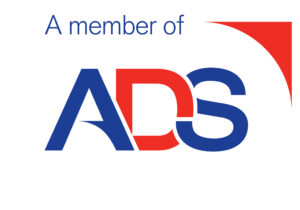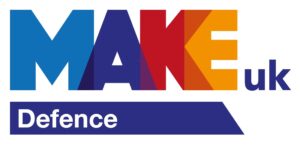As a business owner or sole trader, whether you are manufacturing security equipment, designing elaborate risk assessments or producing training packages, it is quite possible you have created and own IP.
Businesses with an IP portfolio add value to that business. In many cases, this is the protection of the branding, the inventions and the ideas. It is important to consider if you might have any IP, or if you know you do, to regularly check that your IP protects every area of your business whilst ensuring that your IP protection is correctly renewed if you need to.
There are different types and ways of protecting your IP but getting started and protecting that IP is easier than you might think and below we provide a brief overview of the subject.
What is IP and what types of IP are there?
IP is something that you create that has come from your mind. This could be a design, a piece of equipment, a logo, an invention, a symbol or a system of working. You can also acquire IP from original creators or previous owners with their permission. Bear in mind that an idea in your head is not protected and cannot be deemed to be your ‘property’, so sharing an idea could lead to third parties stealing it or you losing the value of the IP. Broadly, IP can be secured by utilising copyright, trademarks, patents and design rights. Some rights are granted automatically, whilst others require a form of registration.
Copyright
Copyright is an IP right that arises automatically and protects original written, dramatic and artistic works. This automatic right stops others from using your works for a limited time without permission. Copyright is displayed with the authors name, date the ‘©’ sign. This protection lasts up to 70 years after the death of the author/creator. So, if for instance you have spent a lot of effort creating a website or indeed an informative article, simply by correctly using the © means you can install a degree of protection,
Trademark
A trademark is a form of protection that covers words, symbols, slogans, logos, shape, colour and any combination that distinguishes a brand or a product from others in the market. This allows your clients to identify that a brand or product is from a particular origin and sets it apart from other maybe similar competition. It therefore acts as a business identifier that your clients use to obtain a sense of security and value in the goods or services provided by your business. A trademark does not have to relate to a stand-alone product, it can and often does represent an entire brand as a whole.
It is advisable to register a trademark, as this provides proof that the mark belongs to you and can be enforced against anyone using the same or similar mark within the same sector. It is possible to receive unregistered trademark rights in the UK, but this is reliant on many years of reputation and extensive evidence of the trademarks use. To be registerable, the mark must be capable of being distinguishing from other products, without being descriptive enough to limit competition. A UK trademark registration lasts 10 years and can be renewed for further period of 10 years but you can also obtain an internationally registered trademark.
Patent
Patent is a registered right granted to inventors that prevents others from creating or using an invention as described or claimed within a patent document.
To be eligible for a patent, an invention must satisfy certain criteria including that it must be new and involve an inventive step. Registering a patent can be difficult in comparison to other protection, as registration can take around 5 years and cost between £6,000 – £7,000 from first filing to grant in the UK. In the UK a patent can last for 20 years from the point of filing for the patent.
A patent enables you to take legal action against anyone who copies or uses your invention in the UK without your permission, and allows you to assign, license or transfer this right for commercial purposes.
Design Right
Design rights offer protection for the aesthetics of a product so long as the design is new and not an invention or how a product works (that’s a patent). There cannot be any other identical or similar designs that exist and it must also have individual character with a unique overall impression that would be memorable and distinctive to someone with knowledge of the industry.
Design right in the UK automatically protects the shape and configuration (how different parts of a design are arranged together) of objects. But if the design is unregistered, you would need to show evidence of its existence and when it was created in order to both initially register it and, importantly, if you believe someone has copied or produced that design after you and you want to claim it as your own design.
In principle, unregistered design rights last up for 10 years after it was first sold or 15 years after it was created – whichever is earliest. This might be beneficial if you wish to avoid costs, as an unregistered design right is free and arises automatically.
Design rights can also be registered, which is preferable. Registered design rights also give the right to prevent others from using registered design for up to 25 years, although this needs to be renewed every 5 years.
Need advice? Proelium Law is here to help you. We are continuing to work during this difficult period. Call or email us if you have an enquiry, we will call you back at a time convenient for you.
Need advice?Contact us to discuss your requirements and how we can help







